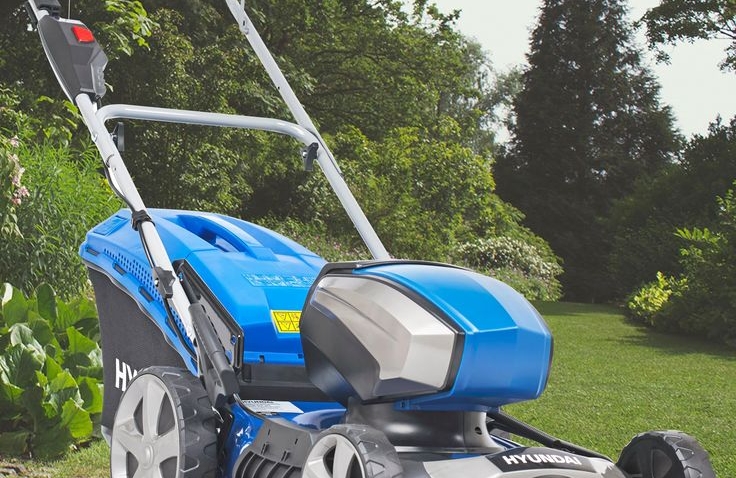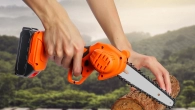
When Was the Lawnmower Invented? The Complete Guide
Introduction: The Significance of the Lawnmower
When was the lawnmower invented? The lawnmower is a ubiquitous tool in many households, playing a crucial role in maintaining well-manicured lawns. But have you ever wondered about the origins of this essential piece of equipment? The invention of the lawnmower has a rich history that spans several centuries, and understanding its development can provide valuable insights into the evolution of lawn care. This comprehensive guide will delve into the timeline of the lawnmower’s invention, the key figures involved, and how it has evolved over time. We will also explore the different types of lawnmowers available today and their unique features. By the end of this article, you will have a thorough understanding of when the lawnmower was invented and its impact on modern landscaping.

The Early Days of Lawn Care
Before the invention of the lawnmower, maintaining a lawn was a labor-intensive task. In the 16th century, lawns were primarily maintained by grazing animals or by using scythes and shears. These methods were not only time-consuming but also required significant physical effort. The concept of a well-kept lawn as a symbol of status and wealth began to emerge in Europe, particularly in England, during the 18th century. However, the lack of efficient tools made it challenging for most people to achieve a perfectly manicured lawn. It wasn’t until the 19th century that a significant breakthrough occurred, leading to the invention of the first mechanical lawnmower.
The Invention of the First Mechanical Lawnmower
The invention of the lawnmower has had a profound and multifaceted impact on society, fundamentally transforming the way we perceive, maintain, and interact with our outdoor spaces. Before the advent of the lawnmower. Maintaining a well-kept lawn was a laborious and time-consuming task, often reserved for the wealthy who could afford to hire manual labor. The introduction of the first mechanical lawnmower in the 19th century, however, democratized lawn care, making it possible for a broader segment of the population to enjoy the benefits of a neatly trimmed lawn.
The availability of efficient and affordable lawnmowers has not only made lawn maintenance more accessible but has also elevated the aesthetic appeal of homes and communities. A well-maintained lawn is now a common feature in suburban neighborhoods. Symbolizing a sense of order, pride, and community. This shift in perception has led to a cultural phenomenon where a lush, green lawn is often associated with leisure, relaxation, and a higher quality of life. Homeowners take great pride in their lawns, and the act of mowing the lawn has become a regular weekend activity, fostering a sense of accomplishment and connection to one’s property.
Public
Beyond residential settings, the lawnmower has played a crucial role in the development and maintenance of sports fields, golf courses, and public parks. These spaces require precise and consistent grass management to ensure optimal playing conditions and visual appeal. The efficiency and precision of modern lawnmowers have enabled the creation and upkeep of these recreational areas. Contributing significantly to the growth of sports and outdoor activities. For example, the smooth, even surface of a well-mowed soccer field or the meticulously maintained greens of a golf course are essential for the enjoyment and safety of players. Public parks, too, benefit from regular mowing. Providing clean, inviting spaces for families and individuals to gather, exercise, and relax.
The lawnmower industry itself has become a significant economic force, creating numerous job opportunities across various sectors. From the manufacturing and design of lawnmowers to their sales and distribution, the industry supports a wide range of careers. Additionally, the demand for professional landscaping and maintenance services has grown, providing employment for many individuals. Landscapers, gardeners, and groundskeepers rely on advanced lawnmower technology to deliver high-quality services, ensuring that both private and public spaces remain attractive and functional.
The Evolution of the Lawnmower
Following the success of Budding’s invention, the lawnmower underwent several improvements and innovations. In the late 19th century, the introduction of the reel mower, also known as the cylinder mower, marked a significant advancement. Reel mowers featured multiple blades arranged in a helical pattern, which provided a cleaner and more precise cut. This type of mower became popular in both residential and commercial settings. The early 20th century saw the development of the first gas-powered lawnmowers, which offered greater power and efficiency. These mowers were initially heavy and cumbersome, but they paved the way for the modern lawnmowers we use today. The introduction of the rotary mower in the 1950s further transformed the industry. Rotary mowers use a single, horizontally rotating blade to cut the grass, making them more versatile and easier to maneuver. This design is still widely used in both push and self-propelled models.
Types of Lawnmowers
Today, there are several types of lawnmowers available, each designed to meet specific needs and preferences. The most common types include:
- Push Mowers: These are the simplest and most traditional type of lawnmower. They require the user to push the mower manually, making them ideal for small lawns. Push mowers are typically lightweight and easy to store, but they can be physically demanding for larger areas.
- Self-Propelled Mowers: Self-propelled mowers are equipped with a drive system that powers the wheels, reducing the effort required to push the mower. They are suitable for medium to large lawns and come in both gas and electric versions. Self-propelled mowers often offer adjustable speed settings, allowing users to control the pace at which they mow.
- Riding Mowers: Riding mowers, also known as lawn tractors, are designed for larger lawns and estates. They feature a seat and steering wheel, allowing the user to sit and drive the mower. Riding mowers are more powerful and can handle rough terrain and steep slopes. They are available in both rear-engine and front-engine configurations, with the latter being more maneuverable.
- Zero-Turn Mowers: Zero-turn mowers are a specialized type of riding mower that can turn 360 degrees on the spot. They are highly maneuverable and efficient, making them ideal for complex landscaping and tight spaces. Zero-turn mowers are popular among professional landscapers and homeowners with large, intricate lawns.
- Electric Mowers: Electric mowers are becoming increasingly popular due to their environmental benefits and ease of use. They are powered by electricity, either through a cord or a rechargeable battery. Electric mowers are quieter, produce no emissions, and require less maintenance than gas-powered models. They are suitable for small to medium-sized lawns and are available in both push and self-propelled versions.
Modern Innovations in Lawnmower Technology
In recent years, the lawnmower industry has seen significant advancements in technology. One of the most notable innovations is the development of robotic lawnmowers. These autonomous devices are designed to mow the lawn without human intervention. Using GPS and sensors to navigate and avoid obstacles. Robotic mowers are ideal for those who want a hands-free approach to lawn care and are particularly useful for individuals with busy schedules or mobility issues. Another innovation is the integration of smart technology, such as Bluetooth and Wi-Fi. Which allows users to control and monitor their mowers via smartphone apps. These apps can provide real-time data on the mower’s performance, battery life. And maintenance needs, making it easier to keep the lawn in top condition.
The Impact of the Lawnmower on Society
The invention of the lawnmower has had a profound impact on society, transforming the way we perceive and maintain our outdoor spaces. The availability of efficient and affordable lawnmowers has made it possible for more people to enjoy well-kept lawns, enhancing the aesthetic appeal of homes and communities. Lawns have become a symbol of suburban life and are often associated with leisure and relaxation. The lawnmower has also played a role in the development of sports fields, golf courses, and public parks, contributing to the growth of recreational activities. Additionally, the lawnmower industry has created numerous job opportunities, from manufacturing and sales to landscaping and maintenance services. The ongoing evolution of lawnmower technology continues to shape the future of lawn care, making it more accessible and sustainable for generations to come.

Conclusion: The Legacy of the Lawnmower
The lawnmower has come a long way since its invention in 1830. From Edwin Beard Budding’s simple push mower to the advanced robotic mowers of today, the lawnmower has undergone a remarkable transformation. Understanding the history and evolution of the lawnmower provides valuable insights into the importance of innovation and the impact of technology on everyday life. Whether you are a homeowner, a professional landscaper, or simply someone who appreciates a well-maintained lawn, the lawnmower remains an indispensable tool. As we continue to see new advancements in lawnmower technology, the legacy of this humble yet revolutionary invention will endure, ensuring that our lawns remain beautiful and well-kept for years to come.













Leave a Reply